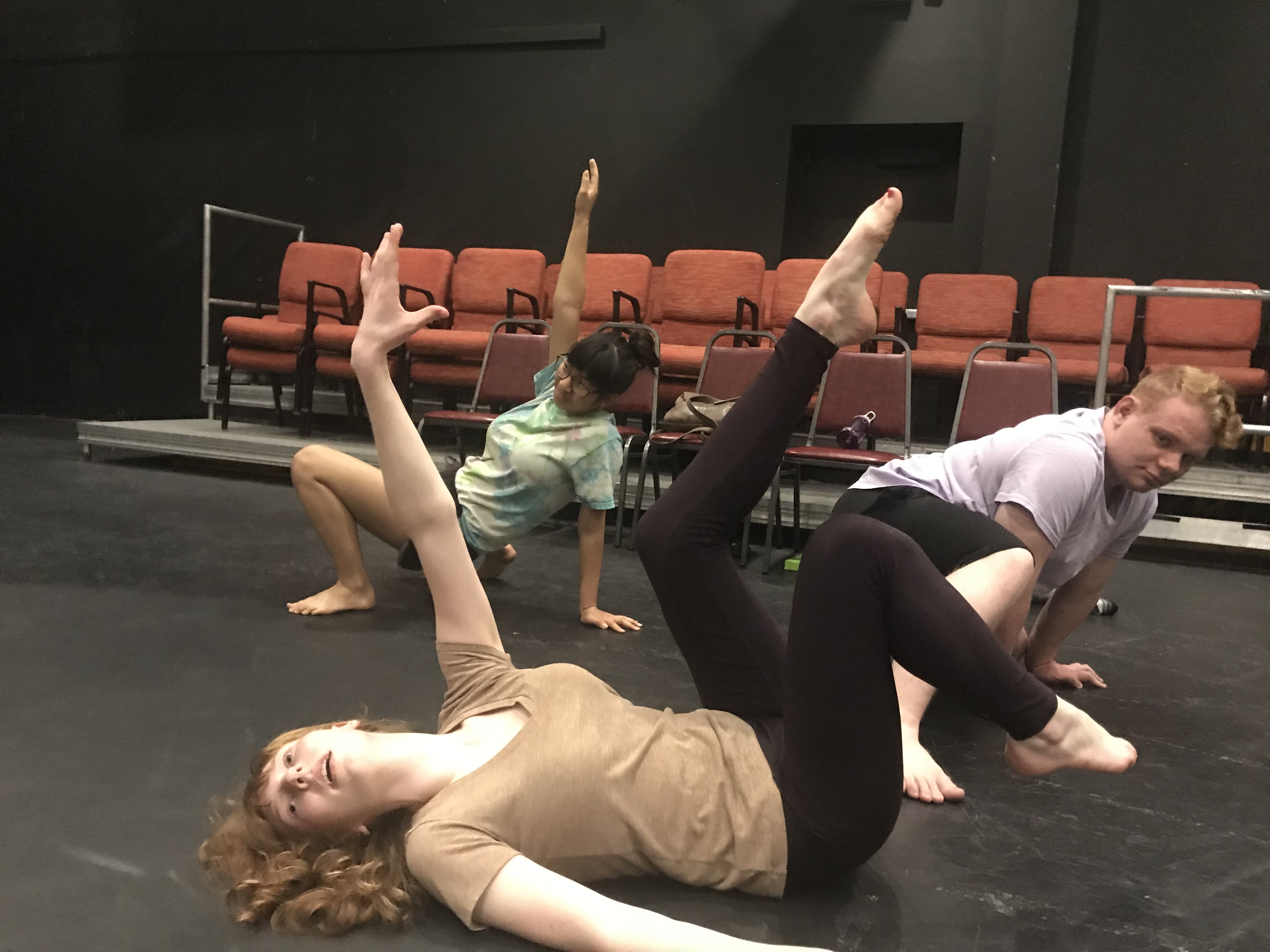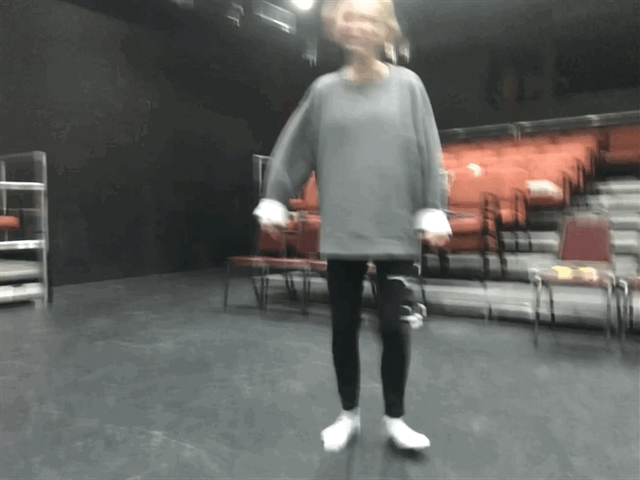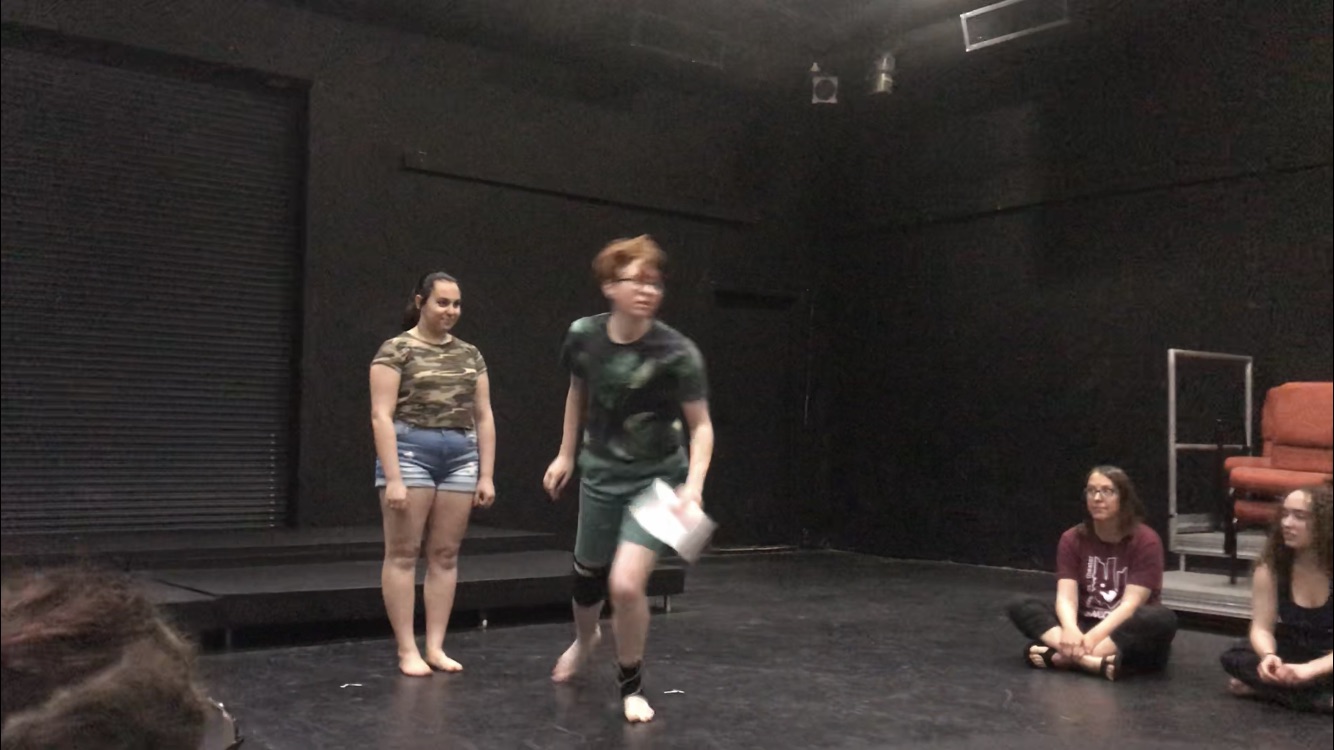“I became twice as excited when I walked in here because the energy was so great!”
Here is the remark of one new participant as we began the ritualistic process of introducing ourselves that comes with the start of any collaborative process. It made me reflect on what I felt like my first day of the workshop–nervous, intimidated, confused, and yes, excited. The energy given off by the directors who are eager to see the participants grow and the participants who are eager to do the growing themselves stirs the very atoms in the room to a frenzied pace that is gloriously unescapable. And now here I am beginning my sixth year (and first as a non-participant) with the workshop, and guess what? My excitement has only multiplied, almost becoming uncontainable. Perhaps this is because I know what rewards are to come in the next weeks of the workshop, or maybe I am nostalgic for the friends I’ve made and the performances we’ve created. Either way, beginning the workshop, whether it’s your first year as a participant or sixteenth year as a director, like Gwethalyn, gives a feeling that never really leaves you.
We are a small group this year. Just 12 participants. Of course, we hope for more, but regardless, the group this year is clearly just as driven, energized, and inquisitive as any group before them. After warming up our bodies and our voices, we began exploring through exercises. We started with a frenzied (and to some, dreaded) game of red ball. Remembering names as imaginary objects flew by broke us into frazzled giggles. But of course, it is always the most fun way to begin our work. (My favorite object was “pink trash,” although we ended up with two by the end. But who can ever have enough pink trash?) Next, we explored the space. We added qualities to our movement: alternating between high and low, stopping and starting, different speeds, walking with our hands on our ankles (I included pictures of this one because nothing screams MXTW like butts in the air), and moving using three points of contact with the floor.
What struck me about the nature of this basic exercise is that it is the first time the participants must make decisions. Will I walk on my tip-toes or with my hands in the air? Will I stop here? How long will I wait before I move again? One hand on the floor or both? While these decisions happen in a split second, it is the beginning of what is fundamental about the workshop: trying something weird and seeing if it works. And isn’t that our job as artists? We must follow our curiosities in order to make discoveries. Quoting JoAnne Akalaitis, Gwethalyn called our work “pure actor-research.” Clearly, it is through the relationship of our curiosity and discovery of ourselves that we will create our art this summer.
“Pure actor-research.” -JoAnne Akalaitis
“Make a shape!” Next, we moved into shaping. The shapes the actors made were weird and wonderful as always. They grew jagged and stiff when they explored tension, and droopy and wilted when they tried relaxing. Shapes rose like mountains when they changed the height and shrunk like ice cubes melting in the sun when they changed the height again. Then came the instruction from Evan to make a shape that was completely unexpected: “something you didn’t know you could make.” And that’s when one could notice a complete shift in the room. The shapes were not only weird and wonderful but now also primal and uninhibited. Don’t you love what happens when you trust the subconscious? Gwethalyn, who was shaping as well, reflected on it, saying that she had been doing the workshop for twenty years and was afraid she couldn’t come up with something new, but then she made a shape with her face–“a face shape!” I think we discovered then the glorious feeling to just leave the mind behind and let the body do.
And then it was time to begin reading. We started with the Futurists–those turn of the 20th-century Italian artists with a love for manifestos and a fixation on machines. Gwethalyn had the readers sit in the middle of the circle facing out and gave them the instruction to read one line of the manifesto at a time, each time trying to “one-up another” as if they are each “scrabbling to have a say.” What was produced was a prophetical font, spouting harsh images of a rotting, violent, grotesque, man-made dystopia. Added on top was the instruction for one participant to make sounds influenced by the text, and so the images were layered with coughing, pops, groans, and screams. It all made for quite a shocking aural experience. And that is exactly what the Futurists would have wanted. As one participant noted: “they wanted to change the world.” The Futurists strove to shatter their audience’s perception of reality and wake them up from their dream-like state. They broke free what theater could be and wanted to give their audience the experience of an event instead of just recreating something on stage. They worked with synchronicity, randomness, and “sintesi” (what they called life’s boiled-down moments), and they believed that their audiences didn’t need to understand everything. Another participant called them “angry twenty-year-olds,” and perhaps they were that too. But the Futurist’s confrontational language and style is something for the actors to begin exploring over the next few weeks. We even did a little confrontation ourselves by chanting one line from the text in a whisper until it grew to an earth-shaking shout.
“THE SCENT ALONE IS ENOUGH FOR OUR BEASTS!”
The other author we studied was French poet and playwright Jean Cocteau, and we read from his play, The Wedding on the Eiffel Tower. His play, about a wedding party having their picture taken on the Eiffel Tower, is narrated to the audience by two phonographs, who have complete control over what the other characters do and say (Cocteau wanted them to function much like a Greek chorus). Ashley emphasized Cocteau’s instructions to the readers to speak “very loudly and very quickly.” What ensued was a hilarious and absurd story with larger than life characters, witty responses, and nonsensical images. When reflecting on what made Cocteau’s play a comedy, one participant remarked, “the absurdity is funny…even the violence at inappropriate times.” Another participant said that they felt like they had a hard time catching their breath while listening because with the rapid pace “you didn’t have the opportunity to space out.” And lastly, when comparing Cocteau to the Futurist, someone observed that he “confuses to entertain” as opposed to “confusing to confront.” Whatever his intention, Cocteau certainly provides humor in his work with exaggeration, personification, tableaus, music, and wit–all techniques we will be eager to try ourselves.
With our readings for the day finished, we had time for one last exercise. We passed out a play (but it looks much more like a diagram) to the actors in groups and gave them a short time to come up with a way to perform it.

Another decision to make. However, the actors, with the rest of today’s discoveries in mind, were ready to make some decisions. When they finished their short rehearsals they presented their pieces. Each group had a completely different interpretation. One placed the audience in the middle and performed around them. Another ran in circles between the audience while jumping and yelling words from the script. And the last group had one actor run back and forth between two others, repeating their words as they slowly closed in on him. It was really quite a sight, and absolutely astounding when you consider that these actors met and began their work only about three hours ago–and here they are performing a play! I can now only wait with excitement for when they are performing their own pieces in just a few weeks.

















Leave a Reply
You must be logged in to post a comment.